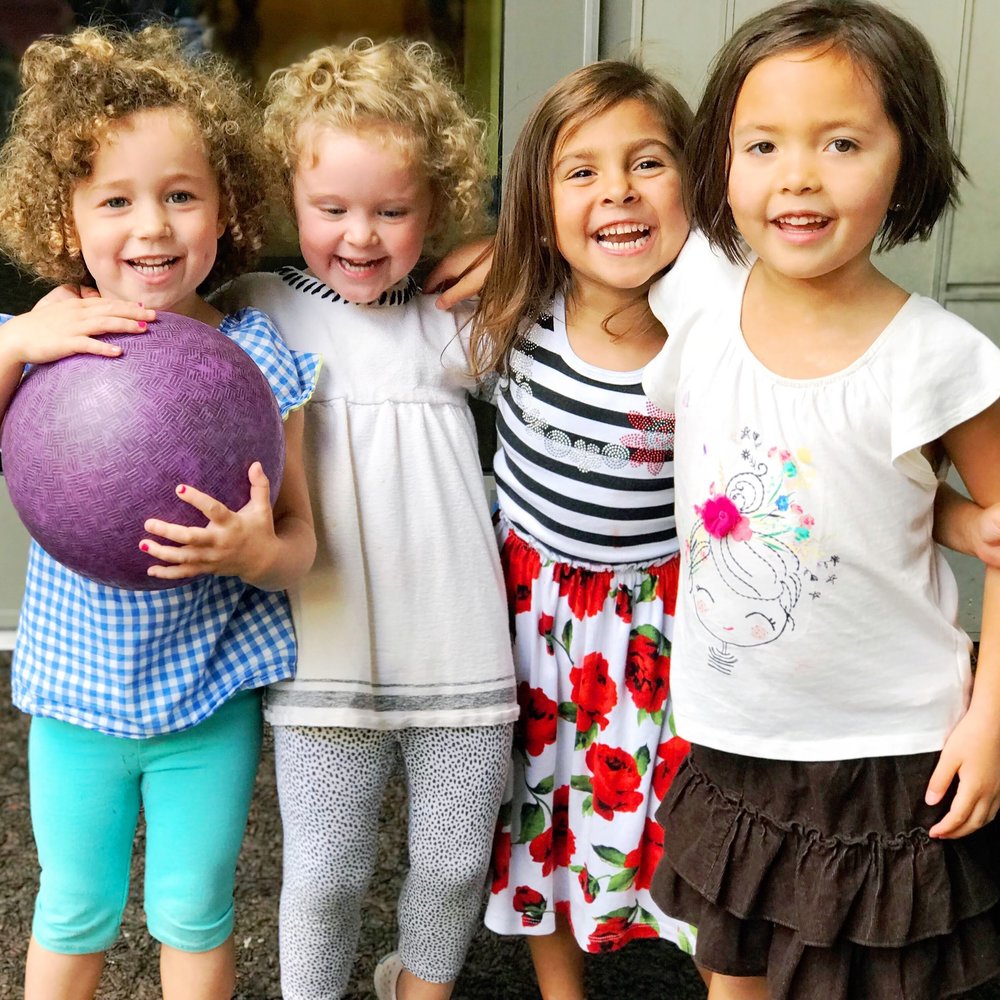
“Following the child does not mean ignoring ourselves.”
In the Primary classroom, we talk often about being “a bucket-filler,” which means doing or saying kind things to another person. But how often do we pause to fill up our own buckets? You cannot pour from an empty cup. A few months ago I led a seminar with a few other teachers on Positive Discipline, self-care, and Mommy and Me yoga. Most of the moms who came were probably eager to learn Positive Discipline techniques and do some downward dogs with their minis. Little did they know we were going to talk less about what to do specifically in the throes of a tantrum, and more about how our own behaviors and patterns can precipitate and/or exacerbate these events. When we take time to show up for ourselves, we are better able to show up, level-headed for our children. We are better able to respond, rather than react.
Dr. Jane Nelsen’s Positive Discipline training for parents and teachers includes an activity called “Top Card.” During this activity you are to imagine you receive 4 (horrible) packages:
-
Rejection/hassles,
-
Stress/pain
-
Criticism/humiliation
-
Meaninglessness/unimportance

Of these four options, participants are to choose the one they loathe the most and would send back. Depending on which of these bothers you the most, you likely have some go-to behaviors during moments of conflict or stress. If you chose rejection and hassles your go-to behavior is pleasing. If a child is having an epic meltdown over reading four more books together and you desperately fear their rejection – you will likely do whatever is necessary to please them. If your least favorite of these options is stress and pain, you handle conflict by seeking comfort, often over solving the problem. If criticism and pain are your kryptonite you aim to control the situation or seek control over other aspects of your life to feel better. Finally, if the worst thing you can imagine feeling is meaningless or unimportant, you may often display behaviors that emphasize your superiority.
I tell you about this activity because it has almost nothing to do with the child’s behavior – and everything to do with our own. If we take the time to take care of ourselves we will be better able to reflect and recognize what our triggers are, how we typically react to a challenge, and perhaps make a more thoughtful choice in the moment.
Taking time for ourselves looks different for every person, but here are some ideas for ways to give yourself a break:
-
Let go of being perfect. “We’re all imperfect parents and that’s perfectly okay. Tiny humans need connection not perfection” (L.R. Knost). Instead of striving to be perfect, focus on having a growth mindset. Demonstrate for your child through words and actions that you don’t know everything. There is no finish line where we’ve “made it.” We are all learning and growing every day.
-
Start and end your day mindfully. Wake up a few minutes earlier to have some quiet time and start your day off positively with intention. You can’t control the blunders that may happen, but you can control your emotions and how you react to them.
-
Make a cup of coffee or tea. I attended a Montessori Coaches training recently where the speaker, an administrator at a public school, described her struggle to fit a cup of tea into her busy daily schedule. She literally wrote it down on her to-do list and was determined to give herself a break each day. She said she got so great…at boiling water. Make the time. Have the tea.
-
Play music.
-
Exercise.
-
Go outside.
-
Spend time with friends.
-
-
Go slow. Being on time for anything with a toddler in tow is difficult, but every once in awhile stop rushing. Say “no” to some things so you have more time to notice the pleasures present in each moment. Bonus – if you cultivate more of a slow attitude, your little one will learn to take it more seriously when you really do need to rush!
-
Practice presence. Toddlers set a great example of being truly present every day. They delight at the appearance of a bird flitting close to them on the playground. They drop everything they are doing to alert us and gaze in wonder at an airplane. Follow them. Actively listen when someone speaks, rather than internally formulate a response. Turn off technology and practice calming your mind. Take time to pause. When we slow down we can be more objective observers and see our child’s struggles from their perspective. This allows us to be more steady, tranquil leaders for them through the difficult times.
Another activity we do in the Positive Discipline training is tell all the parents or teachers to make a fist. We instruct them to watch carefully and do as we say. We then tell them to place their fist on their cheek as we place ours on our chin. You’d be surprised how many grown adults put their fists on their chin, rather than their cheek. Children will always learn more from what we do than what we say. If we show them how important it is to take care of ourselves – they will grow up learning how to do the same.


